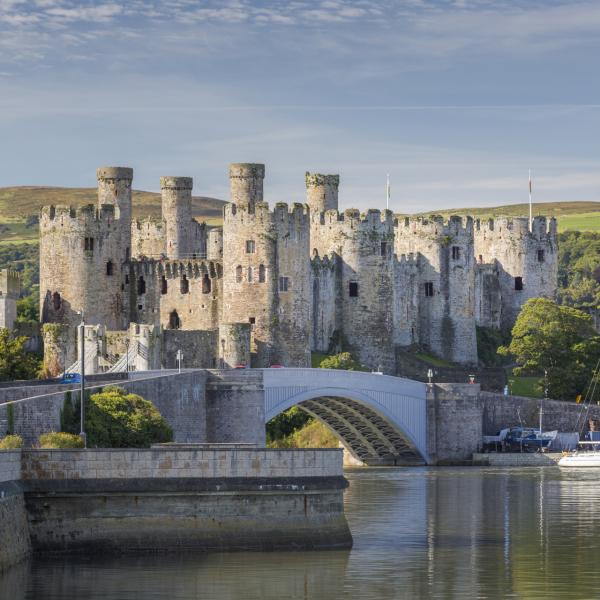
When I arrived in Conwy marina back in June on walking alone the winding coastal path adjacent to Conwy river you suddenly behold an amazing Norman castle that dominates the southern bank of the Conwy river.
Wales has many fine Norman castles, dotted all over North and South Wales. Conwy castle is a particularly fine example, but what makes it unique is the small town of Conwy is fully surrounding by embattlement walls.
Who built it and why are there so many Norman castles in Wales? Who were the Normans and what made them such powerful adversaries to the English Walsh and Irish and even the Scots?
The Normans came from France or Normandy. What made them such tough fightening men? Well Norman in French was “Man from the North” from Scandanvia; Norway, Sweden and Denmark.
When the occupying troops of the Roman empire pulled out of Britian due to Italy and Rome being overun by the Visigoths it left a massive power vacuum in Britain. Take Afganistan as ISAF troops suddenly pulled out the Afganistan war lords ( Talban ) are taking back control of the country. The same thing happened after the Romans pulled out of Britain. Britain had lots of natural and mineral resources. Minerals such as: Tin, copper, gold, lead, salt, silver, coal and fertile lands. The Roman economy depended upon abundant metals to exploit for trade.
Britain was ripe for plunder by the Angles and Saxons who were germanic people and the Vikings or Norsemen. which is really the correct term for the men from the north ( Norse ) from Scandinavia.
What made the Norsemen, later the Frankish Normans, such wondeful seafarers and superior fighting men? It was their wondeful fast shallow draft longships, which could be sailed and rowed enabling them to navigate rivers and beach on shorelines, it was this mobility and surprise which terrorised the Brits. They were good at knowning where to attack and when? Especially times of unheaval in political circumstances. Lets not go too far back proir to the occupation of Wales by Edward 1 Longshanks ( He was very tall )who built Conwy castle and many others throughout Wales.
But Edward 1 was from Norman stock his ancestor was William the Conqueror the Duke of Normandy, who was intergrated Norseman with the Frankish nation.
The Norseman laterly the Normans like the Romans were clever practical, brave and fearless people who utilise and developed technologies superior to their enemies.
Being a sailor I’ve always been fasinated by the Norseman longships, they were fast due to the nature of the clinker built overlapping planking hulls. Longships were light and flexible, however open to all sorts of sea conditions with no protection form the elements. In fact I would say it was living and sailing in those conditions that made them tough and hardy!
Weapons of the Norseman were made of steel, swords, axes, spears,slings and bows and arrows. Scandanavia has some of the finest if not the finest iron ore deposits for the manufacture of high quality steels. Armour and shields and chainmail. But swords for instance would of been really made for noblemen and would of been highly prized and expensive to make and forge.
When I was involved in engineering I always remembered a swedish steel maker called Sandvik who specialised in stainless steel but it was the high quality of their steels that made such a difference in the finished product.
The Norman invasion of Britain in 1066. William the Duke of Normandy must of known that Harold Godwinson or Harold 1 Anglo-Saxon new King of England wasn’t the rightful heir of throne of England after Edward the Confessors death. He had died childless! Edward had promised William the throne after his death. Harold 1 who incidently only reigned over England for 10 months. Both Harald Hanrada of Norway and William Duke of Normandy both equally claimed the English Throne.
Harald Hanrada landed at Tyne and first defeated the Earl of Mercia and the Earl of Northumbria at the Battle of Fulford near York on 20 September 1066. Harold did a force march from London reaching York in 4 days. At Stamford Bridge Hardrada was defeated by Harold. But After the battle at Stamford Bridge he had to race back down to Sussex to stop the invasion of William Duke of Normandy. Can you imagine that over a matter of weeks Harolds army marched 500 miles and fought two hand to hand battles what an amazing feat of arms, but unfotunately Harold was killed on 14 October by an arrow in the eye? Evidently this isn’t how he died more likely he was slaughtered on the battlefield.
The english army was composed mainly of infantry and had few archers. William had some infantry, heavy cavalry and archers. William couldn’t break the english lines they adopted a tactic of pretending to flee in panic then turning on his pursuers. William had perfected this ruse in other battles he had fought in France. With Harolds death near the end of the battle it broke the english moral and they fled from battle ground and were cut down by Williams Knights. William was crowned king on Christmas day 1066 in Westminister cathedral. In conclusion of the battle it was the Normans superior tactical make up of heavy cavalry, archers and infantry and the ruse that allowed Harolds forces to be outflanked and vunerable to attack. There were further invasions by the Danish and anglo-saxon rebellions, but these were all put down ruthlessly by the Normands.
Like the Romans before the Normans built fortifications at strategic locations to quell rebelions and dominate the english.
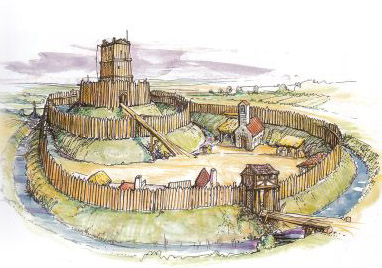
The word Castle from the Latin Castellum small camp or fort. In fact what we see today was not the type of fortifications the Normans built when they first arrived in england but were wooden fortifications prefabricated before the invasion, to erect quickly as defensive barrier to sudden attack, very like how the Roman legionnaires built their temporary fortifications at strategic locations, near river crossings or on high ground giving good visibility and all around defence. The timbers were bolted together and the first they built was at Pevensey at the site of an old Roman fort which was situated on high ground. What was the pupose of a fort: To act as fortified post to house horses, provisions, to dominate the ground and to frighten the locals and a site to govern the surrounding district.
Later on the Fortifications became more permanent and were built of stone in many cases cannibalising Roman fortifications to use in the Motte and Bailey raised earth and walls plus exterior ditches or moats.
The Occupation of Wales, against the welsh noble tribal class. The great advantage to the local welsh chieftans was the terrain. Hilly mountainous countryside with natural barriers of rivers.
The native inhabitants of medieval Wales were Celtic Britons, whom the Anglo-Saxons had driven out of the midlands. In 8th century the Anglo-Saxons established a border King Offa’s Dyke. The status quo was shattered in the 11 century by the arrial of the Normans,who conquered a border zone in Wales known as the Marches,french word meaning frontier.
Native Wales consisted of a number of seperate kingdoms ruled by welsh princes. After the first encounters with the Normans, Welsh princes avoided open level ground, which favoured the heavily armed mounted knights. The Welsh used more gorilla like tactics in the more rugged terrain to harass the slow moving Norman knights. Normans found it easier to control the lowlands through use of castle fortification of the motte and bailey earthworks.
Llywelyn Fawr the Great became the Prince of Wales in 1233, rather then sweaing alligence to the English Crown, llywelyn Gruffydd in 1265 supported the rebellious baron Simon de Montfort against King Henry 111 obtained Montforts recognition as Prince of Wales.
Upon Edwards succession to the throne in 1274, Llywelyn Gruffydd’s wondered whether the new King would recognise him as the Prince of Wales? Edward demanded that Llywelyn pay homage to him before he would acknowledge his title. Llywelyn was suspicious of Edward sincerity especially when Edward provided sanctuary for Llywelyn’s brother Daffydd and Prince Gwenynwyn of Powys both of who were expelled by llywelyn for plotting to assassinate him
To make matters more complicated Edward seized Llywelyn’s fiancée, Eleanor de Montfort,while en route to Wales. Her late husband, Simon de Montfort, had led the rebel barons against his father in 1264, the king feared that this marriage would revive oppostion to the crown.
Prince Llywelyn refusd to pay homage. 1276 Edward resolved to force Llywelyn into submission. Gwynedd was his realm of power and was natural stronhold with the deep Conwy river valley which was natural defence for the fortress mountains of Snowdonia. Northwest of Snowdonia was the large, fertile island of Anglesey. Separated from the mainland by the straits of Menai.
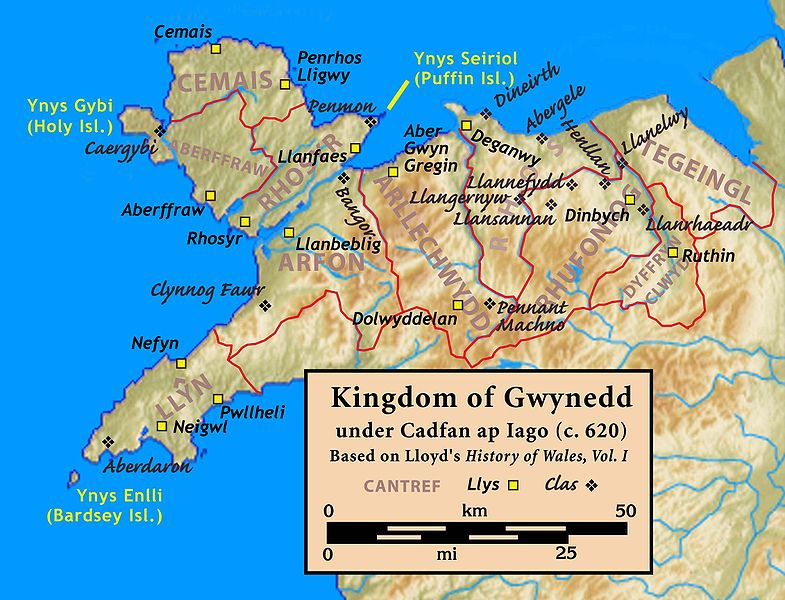
The various Walsh princes of Gwynedd did build fortifications and over the years tried to improve them and they where situated on natural geological defence positions. In most cases they were modest structures.
The Welsh would of utilised or developed old Roman defence fortifications but these forts weren’t in the same league as the later Norman fortifications such as Conwy. Welsh princes were helpless in face of a Royal army.
The entire population of Wales in the 13 century was only about 300,000. England had population of 4 million. Edward could raise more troops and his forces were better equipped. Llywelyn had to rely on a strategy of gorilla tactics or hit and run, however the Welsh would have to abandon their fortifications settlements and crops. The Welsh unable to effectively pusue the traditional strategy of evasion and tried to adopt a open confrontation with Edward forces.
Edward used 3 pronged attack from the south mid and north wales on January 1277 the northern force under Willam de Beauchamp with the help of llywelyn’s brother Daffydd has secured around Cwyd River.
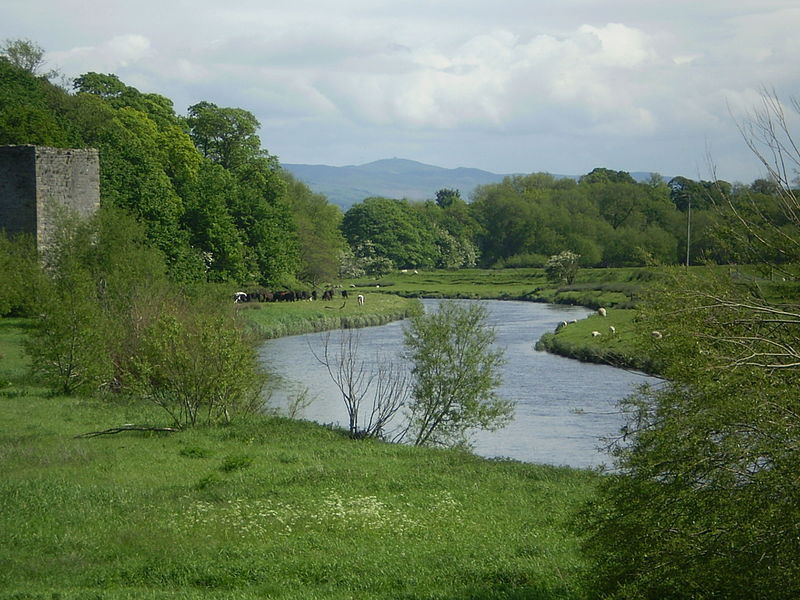
On April 1 the central force under Roger Mortimer placed Dlforwyn Castle under siege. Believing resistance to be futile the garrison agreed to surrender on the 8th. Llywelyn was in the vacinity he chose not to fight and risk destruction of his army. castle therfore surrendered to the English.
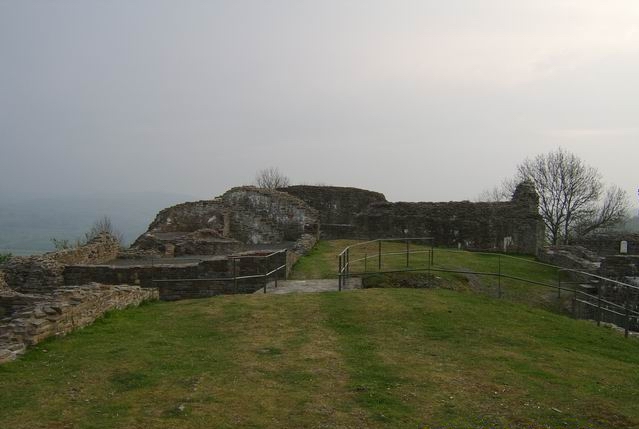
The southern force under Payn Fitz Parick de Chadworth had begun its assult on the Welsh castles that controlled the Tywi valley. With the fall of Dynefwr castle on April 11.
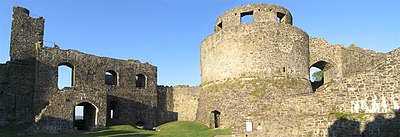
The Local prince Rhys ap Maredudd switched his allegiance to the English. Unfortunately for Llywelyn he wouldn’t be the last to defect to King Edward. Command of the southern force was Edward’s brother ,Edmund Crouchback of Lancaster, who led his troops out of the Tywi valley into the coastal region of Ceredigion, which he subdued.

On July 1 Edward left Worcester with his main army and arrived ar Chester on the 15th. Llywelyn who knew about Edwards movements sent the Bishop of Bangor to Edward with an offer to negotiate. Edward refused as he had assembled such big army and he wanted to put it to use.
Edwards army consisted of 800 horse 15600 infantry included archers and crossbowmen. Ships were sent from the old Cinque ports in the southeast. Cinque French meaning “Five” ports Hastings, Sandwich, Hythe, Dover New Romney.
Upon making camp at a site near the Abbey of Basingwerk Abbey, labourers began construction of Flint castle.
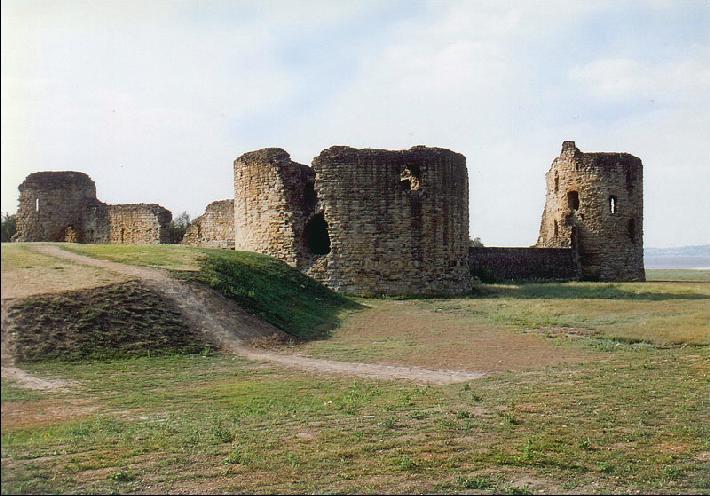
The castle and its earth works were built by 18,000 labourers and masons using local Millstone ,grit. ashlar and sandstone. Master mason James of Saint George was assigned to undertake the works.
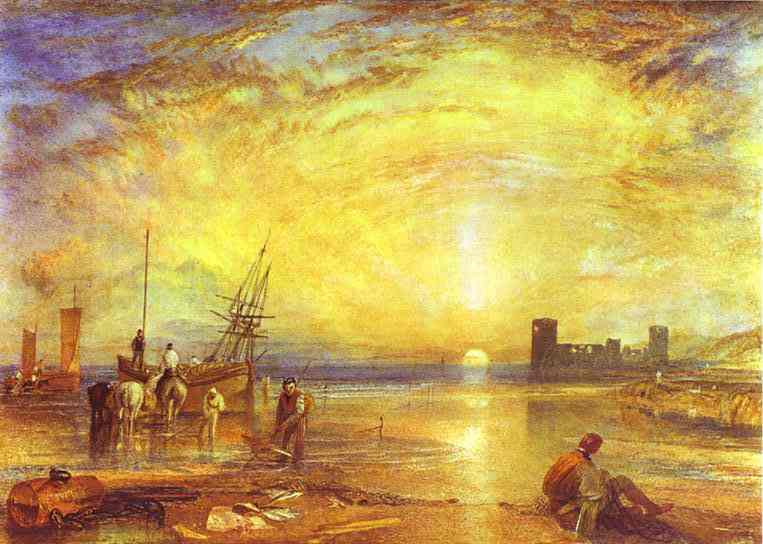
By August 20 Edward had advanced to the estuary of the Clwyd River where he started building Rhuddlan Castle.
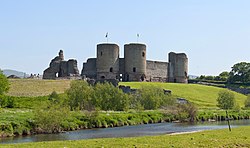
Nine days later having reached Conwy River estuary he halted. Instead of making a direct assault on the mountains of Snowdonia, he sent John de Vescey with force of 2000 infantry to go around llywelyn’s flank by ship and attack Anglesey. For two months Vescey ravanged the island. employing 360 harvesters to gather crops which he sent back to Edward to feed his army along the Conwy.
Llywelyn was now surrounded by three armies-Edwards’s across the Conwy,Vescey’s force on Anglesey and Edmunds’s to the south. In addition ,with the loss of the crops on Anglesey and the approach of winter, his forces and people were faced with starvation. Llywelyn surrendered on November 1.
Rebellions continued by the Welsh for number of years and eventually all the rebellions were ruthlessly put down by Edward. Independent principality of Wales failed to survive, the title of Prince of Wales has endured. This was co-opted by Edward,who bestowed it upon his son,the future Edward 11,in February 1301. To this day, the title Prince of Wales has traditionally been given to the intended successor to the English throne.
In conclusion; the Normands changed England, Wales and Ireland for ever. They totally changed Britain from Anglo-Saxon rule. They dominated Britain with force of arms, built castles all over Britain where they still stand to this day. They built impressive Norman cathedrals, monasteries. Anglo -Saxon leadership and religious leaders were swept away. All the power and authority went to Norman aristocracy. The Church was ruled by French Bishops amd monks.
The Normans made statement of power “we are in control” and any dissension was ruthlessly put down by a scorched earth policy. No quarter was given, even if it mean’t total slaughter to achieve their objectives. The Normans were in Britain for keeps!
Finally, It made me think about modern day conflict and of occupying armies in far off lands. The Normans knew Britain was a promised land like the Romans before them. Taxation was the way they raised money using a Feudal system of control. Feudalism; Dominant social system which Norman nobility held lands from the crown in exchange for military service. ,and vassals were in turn tenants of the nobles, while the peasants, villeins or serfs, were obliged to live on their Noman lord’s land and give homage,labour,and a share of the produce, notionally in exchange for military protection.